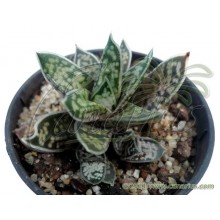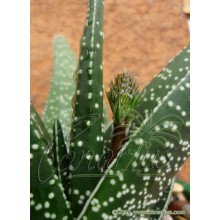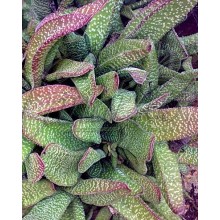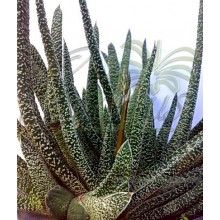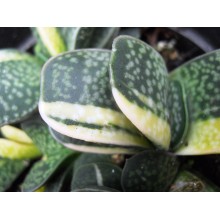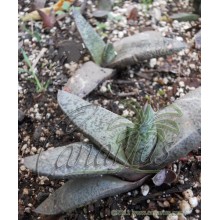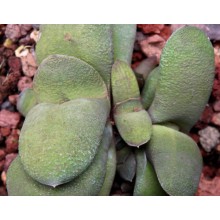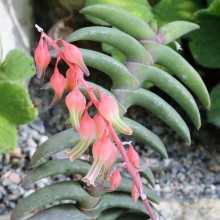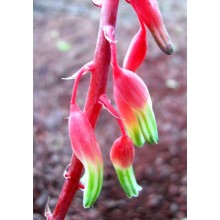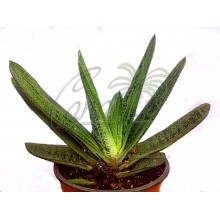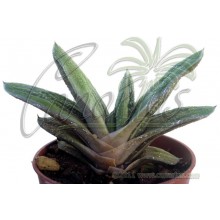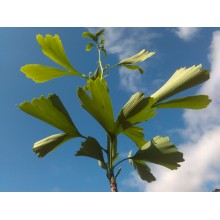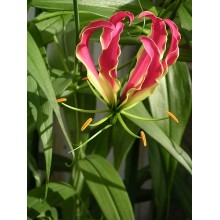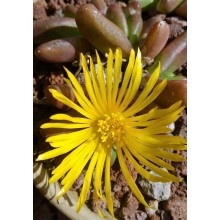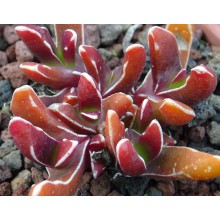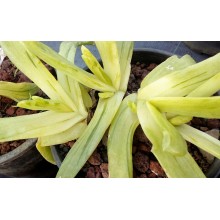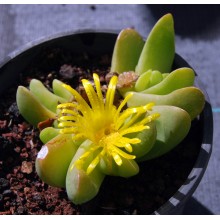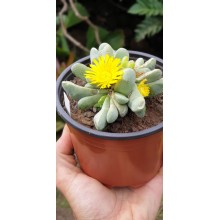General Plants There are 1883 products.

If you like exotic plants, you just came to the right place. Canarius offers the hard-to-find exotic plants which are seldom available in garden centres. Our shop has natural species as well as rare hybrids. We offer exotic plants from the Canary Islands.
Orders are sent to anywhere in Europe and also worldwide. Parcels will reach your home in a few days after shipping (but we also need some days for processing). Feel free to contact us if you have any questions.
Subcategories
-
Succulents
World deserts and dry areas are home to the most interesting plants. Canarius offers an increasing selection of succulent plants of maximum quality, because they are grown outdoors, under the full sun of the Canary Islands.
Succulents or "fat plants" are water-retaining species, adapted to dry conditions. They store succum (juice, water) in their leaves, stems or roots, and often show a stout and fleshy appearance.
-
Exotics
Exotic plants are species from other parts of the world, and they usually have ornamental qualities: a lush foliage, colorful flowers, unusual shapes... Here you can find a great variety of exotic plants: from Bromeliads and Heliconias, to pamls and houseplants.
Exotic plants do not have a particular use. Collectors buy this kind of plants for their rarity, for indoor or outdoor decoration, depending on their features.
-
Fruit, Herbs & Medicinals
Fruit, Herbs & Medicinal plants are focused on getting a better health. In this section, each type of plant produce healthy effects, both fruit trees (Feijoa, Pineapple, Fina de Jete...) and plants for health, such as Graviola, Aloe vera, Callisia fragrans...
In the normal metabolism of all living beings, the organism produces some substances from nutrients latent in the environment; some of these chemicals are part of the process in all (or almost) sort of species. Normally, the useful compounds are concentrated in some of its parts: leaves, seeds, flowers...
Find out your advisable plant and buy it online!
-
Special
On canarius.com we try to remove limits in the field of botany. On our online store we try to facilitate the purchase/sale of plants to anywhere in the world. That's why, we grow from the most common species to the most special plants, as we can see in this section.
-
Gasteria bicolor var. liliputana
Gasteria bicolor var. liliputana
Cont.= 6 cm. One of the smallest gasterias. Clumping rosettes of 4-10 cm. Beautifully spotted leaves turn partially orange in full sun. It is a rare endemic from the Grahamstown quartzitic mountain range. Easy and suitable for indoor growing.
10,70 € -
Gasteria carinata
Gasteria carinata
Cont.= 6 cm. Medium sized species. Leaves are spotted in dark transverse bands. Margins are leathery, with small rounded teeth. It is native to the dry fynbos vegetation of the inland Western Cape. Thrives in Mediterranean climates.
10,70 € -
Gasteria carinata var. carinata
Gasteria carinata var. carinata
NEW ! - Rooted plant, h=8-10 cm. Leaves have a distinct keel and are densely dotted with small white tubercles. This Gasteria is a hardy plant for Mediterranean climates and can stand short freezes.
10,40 € -
Gasteria carinata var. verrucosa
Gasteria carinata var. verrucosa
NEW ! - Rooted plant, h=10-12 cm. Variable subspecies. Leaves have abundant pearl-white tubercles. It is possibly the cold hardiest species in the genus Gasteria as it can withstand temperatures down to -7º C
10,90 € -
Gasteria cv. Variegata
Gasteria cv. Variegata
We offer a clump of three-to-four heads of a nice, easy growing small and distichous gasteria
10,80 € -
Gasteria glauca
Gasteria glauca
A miniature silvery-grey species with a compact, distichous rosette of spotted leaves. Leaves are almost white, with dark green spots! This is the clone EVJ 14670, originally collected by the Kouga river, East of Guernakop, in the Eastern of South Africa.
10,20 € -
Gasteria glomerata
Gasteria glomerata
Nice dwarf species with immaculate, bluish leaves, arranged distichously (in two rows). It starts as a small flat lying plant and eventually grows into dome-shaped clumps.
10,40 € -
Gasteria sp. Schweinfurthii
Gasteria sp. Schweinfurthii
This is a quite obscure species, because the name shweinfurthii was never described officialy. Nevertheless it is a spectacular plant with bold leaves and showy flower spikes.
10,20 € -
Gasteria x Little Warty
Gasteria x Little Warty
NEW !- Rooted plant, 6-8 cm. Ornamental, hybrid Gasteria. Robust plant with dark green leaves, coated with jade green tubercules and showy pale margins.
10,50 € -
Gasteria x Silberstreif
Gasteria x Silberstreif
Cont.= 6 cm. Little known hybrid of German origin. Grey-green tubercles and margins contrast on a darker background.
10,30 € -
Ginkgo biloba
Ginkgo biloba
Ginkgo is a fabulous Asian tree, able to grow in cold temperate to subtropical climates. It is an excellent ornamental but it is also appreciated for its medicinal properties.
64,60 € -
Gliricidia sepium
Gliricidia sepium
Multi purpose tree native to tropical dry forests in Mexico and Central America. It has been introduced and planted in many countries bordering the Caribbean for many reasons.
48,20 € -
Gloriosa superba ‘Rothschildiana’
Gloriosa superba ‘Rothschildiana’
Perennal plant native from Africa and Asia.
21,30 € -
Glottiphyllum pygmaeum
Glottiphyllum pygmaeum
This is the most compact species in the genus Glottyphyllum, and to many the most beautiful. Bake it in full sun and it will turn deep red when stressed.
11,70 € -
Glottiphyllum difforme
Glottiphyllum difforme
This is the most beautiful and least known species in the genus Glottiphyllum. Few collectors grow it and no pictures in the web show the beauty of well-grown plants.
16,80 € -
Glottiphyllum neilii
Glottiphyllum neilii
The "King of the Glotts" is said to be the largest of all the species in the genus Glottiphyllum. Leaves can get quite red when somehow stressed, It is easy to grow, and just as the rest of the genus Glottiphyllum it is chiefly winter-growing but it does not have a true resting season.
10,70 € -
Glottiphyllum oligocarpum
Glottiphyllum oligocarpum
This is a very attractive compact and blue glotty. Leaves are short and waxy and can look blue to grey. The flowers are so large that they cover the whole rosette.
12,00 €
At the moment there are few products in this category General Plants




















